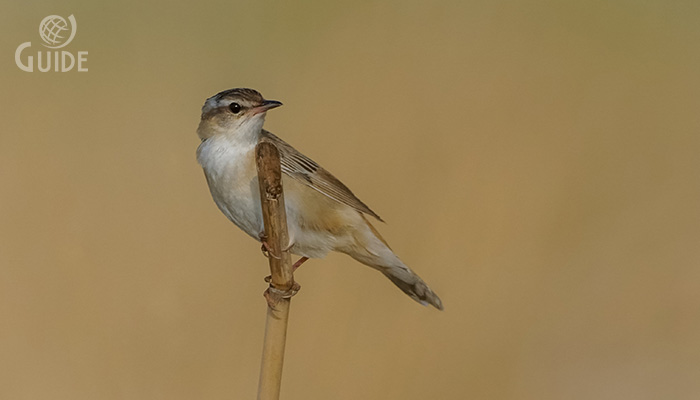
English: Pallas’
Grasshopper Warbler
Russian: Певчий сверчок
Mongolian: Гүймхий шатансүүлт
German: Streifenschwirl
French: Locustelle de
Pallas
Japanese: シベリアセンニュウ (Shiberia-sennyu)
Body
length: 13-14 cm.
Breeds in Siberia, parts of Central
Asia, Mongolia and farther eastwards, in soggy grassland with dense shrubbery
or in thick riverside vegetation (reeds, rushes, willows), in damp forest
clearings or bog margins etc. Very rare autumn vagrant in Europe. Mostly
remains concealed low down in vegetation, difficult to see.
Identification: Can be
described as something between Grasshopper Warbler and Sedge Warbler. Has pale
super-cilium which is a touch more prominent than Grasshopper’s, but nothing
like Sedge’s long and well-marked one. Ground color of upperparts usually a
shade more reddish-brown, not so olive-grey as Grasshopper’s, and dark spotting
on crown, back and uppertail-coverts averages heavier (though some similar),
while rump is often contrastingly reddish-brown and unstreaked (quite like
Sedge Warbler). Most important features: tail-feathers have white tips can be
worn off, or be slightly more diffuse on some juveniles) with dark subterminal
marks; tertials dark brown with sharply defined light brown edge to outer web
and (almost without exception) a white spot near tip of inner web;
undertail-coverts entirely (or almost so) unstreaked, rusty-buff(with whiter
tips). Underparts plain off-white with only faint yellow-buff wash to breast
and flanks (adult), or distinctly yellow-buff with warmer tone to throat,
breast and flanks and with breast spotted (mainly, but not exclusively,
immatures).